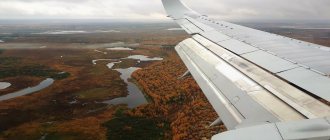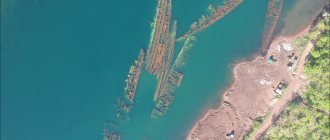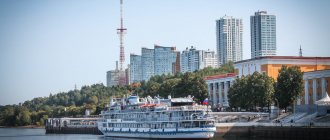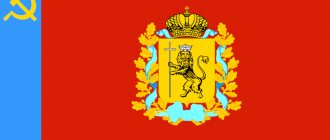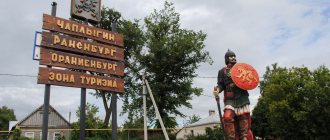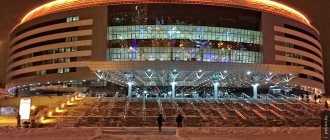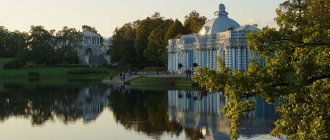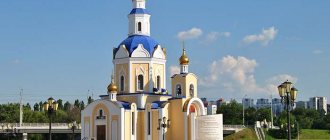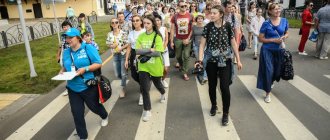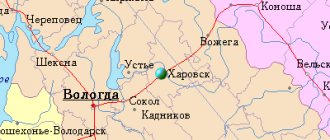no comments, add first
Staraya Russa is the third largest city in the Novgorod region, located on the banks of the Polist and Porusya rivers. This is one of the oldest Russian cities, with a centuries-old, eventful history. The modern appearance of the city is decorated with monuments of ancient architecture: the Spaso-Preobrazhensky Monastery (founded at the end of the 12th century); Church of Mina (XIV century); St. Nicholas Church (XIV-XIX centuries); Trinity Church and Resurrection Cathedral (late 17th century) and others. The rivers flowing through the city diversify the landscape. The cozy streets of the city are surrounded by greenery of gardens and parks.
Water tower on Revolution Square.
Like most ancient Russian cities, Staraya Russa does not have an exact date or even a year of foundation. The first mention of the city in the chronicle dates back to 1167, but it is safe to say that the city was founded much earlier. For example, at the Trinity excavation site in Veliky Novgorod, a birch bark letter was found, dated to the second third of the 11th century. (1030-1060). This letter mentioned two debtors from “Rousa” (Staraya Russa). Archaeological excavations carried out in Staraya Russa itself suggest that the city existed on this site in 1020-1030, and the depth of the cultural layer confirms the earlier residence of people on the site of the ancient city until the 8th century.
The most likely version of the origin of the name Staraya Russa is considered to be hydronymic, from the name of the Porusya River, which was previously called simply Rusa. The name of the river itself is ancient Baltic, coming from the root rud-s- / roud-s-, that is, “red”. There is also a more legendary version of the origin of the city’s name. The Tale of Sloven and Rus says that a hero named Rus settled in this place.
Confluence of the Polist and Porusya rivers, Resurrection Cathedral.
The history of Staraya Russa is inextricably linked with the history of Veliky Novgorod and the Novgorod Republic. Since the end of the 12th century, chronicles regularly report on the construction of churches and monasteries, defensive structures in the city, raids, devastating fires, and wars. In 1478, under Ivan III the Great, Staraya Russa, like the entire Novgorod Republic, became part of the Moscow Principality. Interesting results from the city’s population census at the end of the 15th century have survived to this day. The city at that time was divided into four ends: Rogov, Seredka, Pesiy and Minin. In total, the city had 1,133 households and 3,763 residents. For comparison, in Novgorod at the end of the 15th century there were 50-60 thousand inhabitants (the largest Russian city of that time).
Salt production was the basis for the emergence, development and growth of the city. During a visit to the city in 1693, Peter I ordered to find ways to develop old Russian salt production. Under Catherine II, a new state-owned Salt Works was built on the basis of the old mines, which operated until the mid-19th century.
In addition to the actual salt extraction, local mineral springs were also known for their healing properties. The first scientific studies of waters were carried out in 1815 by Dr. F.P. Haaz, which proved their undoubted medicinal properties. In 1828, physician G. Rauch conducted his research on mineral waters and also obtained data on their medicinal properties. His report was approved, and a decision was made to create a therapeutic balneological and mud resort in Staraya Russa.
The high efficiency of treatment at the resort, proximity to St. Petersburg, accessibility of travel to a wide range of citizens, and the actual fashion for “water” in the upper strata of society made the Starorussky resort, and with it the city, a popular vacation spot for the capital’s elite. In the second half of the 19th century, more than a thousand patients were treated at the resort. Among them is the writer and critic N.A. Dobrolyubov, poet K.M. Fofanov, composer E.F. Napravnik, artist B.M. Kustodiev, Grand Dukes Vladimir and Alexey Alexandrovich. In 1866, on the territory of the Starorussky resort, designed by architect N.L. Benois built a summer theater. One of the best provincial troupes gave performances there, the great actress Vera Komissarzhevskaya began her career here, K.S. came several times. Stanislavsky, visited the theater and Maxim Gorky.
Resurrection Cathedral in Staraya Russa
From 1872 to 1880 The great Russian writer Fyodor Mikhailovich Dostoevsky lived in Staraya Russa. During the years of the writer’s stay in the city, the novel “Teenager”, chapters of the novels “The Brothers Karamazov”, “Demons”, pages of the “Diary of a Writer” and other works were written. The writer's house, which previously belonged to retired colonel A.K. Gribbe, has survived to this day. Every year, international literary readings are held in the house-museum.
In 1878, a railway connection was opened along the route Novgorod - Staraya Russa, connecting the resort with St. Petersburg and Moscow. Initially, the railway from Chudovo station to Staraya Russa was narrow gauge. Passengers from the capital had to change trains at Chudovo. There were 2 trains running along the route every day. Later, in addition to passenger traffic, freight traffic was also opened on the Chudovo-Staraya Russa branch. In 1916, first the Chudovo-Novgorod section, and then the Novgorod-Shimsk section were reconstructed to use the 1524 mm wide gauge. The last section of the railway from Shimsk to Staraya Russa was reconstructed to standard gauge after the Revolution in 1923. During the Great Patriotic War, the railway was seriously damaged, but a decision was made not to restore it. The remaining intact rails were sent to restore the country's most important railway arteries.
During the Great Patriotic War from August 9, 1941 to February 18, 1944, Staraya Russa was occupied by fascist troops. There were fierce battles in the city. By the time of liberation, not a single resident remained in the destroyed city. On April 6, 2015, Staraya Russa was awarded the honorary title of City of Military Glory.
At the request of the administration of the Staraya Russa municipal district and the city of Staraya Russa, a decision was made to the administration of the Novgorod region and the Ministry of Culture of the Russian Federation to celebrate the 1000th anniversary of the history of Staraya Russa in 2015.
General information
The city of the Novgorod region of Russia is located on the banks of the Porusya River, at the place where it flows into the Polist River. It is the administrative center of the municipal district and urban settlement of the same name. It is located 99 km from the regional center - Veliky Novgorod, 20 km from the nearest settlement Parfino. The area of the city is 18.54 sq. km.
The settlement was first mentioned in the chronicle in 1167; in the found birch bark letter (a fragment of a debt list) the mention of Ruse dates back to the last years of the 11th century. Since 1552, the city began to be officially named Staraya Russa.
Staraya Russa is the third most populous city in the Novgorod region. The official name of the residents: townspeople - Rushan, man - Rushanin, woman - Rushanka.
FUN FACTS
- There are more than forty settlements on the Porusya River, but the largest is the city of Staraya Russa. Presumably the last kilometer of the Porusya before it flows into Polist is of artificial origin, and the bed of the Porusya itself, called Mapashka, goes to the right and disappears in the east of the city. Why and by whom Pererytitsa was created is not known exactly.
- According to local legend, the river Polist was named by Prince Rusa - the hero of “The Tale of Sloven and Rusa and the City of Slovensk”, the mythical founder of Staraya Russa - in honor of his wife Polina. There is a simpler explanation: the word “polist” has ancient European roots and literally means “swamp, bog, bog.”
- The Staraya Russa Icon of the Mother of God in Staraya Russa is the largest outdoor icon in the world: height - 278 cm, width - 202 cm. The Russian writer Fyodor Dostoevsky, while in Staraya Russa, described the city in the novel “The Brothers Karamazov” under the name Skotoprigonyevsk. In the house, which has now been turned into a museum, Fyodor Dostoevsky also wrote the novels “Demons” and “The Adolescent”.
- “Grushenka’s House” in Staraya Russa was named after Agrippina Menshova, the prototype of Grushenka Svetlova in Fyodor Dostoevsky’s novel “The Brothers Karamazov”.
- The description of the coat of arms of Staraya Russa from 1781 accurately reflects the natural wealth of the city: “... in a red field there is an iron frying pan on which salt is cooked, placed on a brick stove, because in this city there are notable salt boilers.”
Etymology
Like any decent ancient settlement, Staraya Russa has many stories about the etymology of the origin of the name. One of the generally accepted versions: the original name of the city of Rusa (as it was called until the 16th century) comes from the hydronym - Porusya, which in ancient times was a simple river Rusa. This is what the Baltic tribes who once lived here called it. The word Rusa, Ruza, Ruzza, for example, in Lithuanian ruosa is “a narrow meadow with a stream.” Already in the 19th century, with the advent of another settlement, Novaya Russa, Russa simply became Staraya Russa.
In the late Middle Ages, a toponymic legend appeared that, in accordance with the ancient source “The Tale of Sloven and Rus,” the city was named after an epic hero - a prince named Rus. Who lived in this area in 2395 BC.
The simplest theory suggests that the etymology of the name directly connects it with the name of the ancient state of Rus', and allows for a direct transfer of the toponym from the Principality of Kyiv.
BIRCH BARK HISTORY OF THE CITY
The first mention of Staraya Russa is contained in one of the birch bark documents discovered during excavations in the city.
Staraya Russa is located on the territory of the Novgorod region. The city stands at the confluence of the Polist River, its largest tributary - the Porusya River, called Pererytitsa in the city.
There are many speculations regarding the origin of the name of this city. According to one of them, the word “Rusa” recalls the inextricable connection between the history of the city and the Rus people, who gave their name to the entire ancient Russian state. Philologists also suggest that the name may be based on the hydronym “Porusya” - in the past the river was known as Rusa. The adjective “old” appeared in the middle of the 16th century, when the village of Novaya Rusa was built nearby. The double “s” appeared in the name after the 16th century.
The first chronicle mention of Staraya Russa dates back to 1167. However, Rusa was also mentioned in a birch bark document from the early 70s of the 11th century.
There is also a chronicle legend from the 17th century. “The Legend of Sloven and Rus and the city of Slovensk,” where the mythological version of the appearance of the ancestors of the Russian people is presented in an epic style. Among other things, it tells about the settlement of the outskirts of Novgorod and Prince Ruse, the founder of the city of Ruse:
“...the brother of the Slovenians Rus settled in a certain place - distant from Slovensk the Great, like 50 stades from a salty student, and created a city between two rivers, and called it in his name Rusa, which is still called Rusa Staraya.”
The city immediately began to grow rich and built thanks to trade (the city stood on the waterway “from the Varangians to the Greeks”), crafts and mainly the boiling of salt from local sources.
It so happened that the city found itself at the crossroads of the interests of various political forces during the period when the formation of the Russian state was taking place, and armies of the warring parties marched through these lands every now and then, as a result, ups in the history of the city were more than once replaced by downfalls.
Initially, the city was part of the Novgorod lands. In the XII - XIII centuries. Staraya Russa was attacked by the Lithuanian princes; in 1234 it was taken by the troops of the Livonian Order, but liberated by the townspeople.
In 1478, Russian Tsar Ivan III annexed the city to the Moscow state along with the Novgorod lands. In the 15th century, state-owned salt production appeared in the city (for the needs of the state treasury), which enriched the city even more.
By the middle of the 16th century, Staraya Russa was fourth in the Russian state in terms of the number of inhabitants and the number of households after Moscow, Pskov and Novgorod. Then Staraya Russa was almost wiped off the face of the earth at the end of the 16th - beginning of the 16th century. XVII centuries, during the military campaigns of Tsar Ivan the Terrible and in the Time of Troubles: in 1608 the city was captured by troops of False Dmitry II, and in 1611 by the Swedes. And only 38 inhabitants remained in the city, but by order of Tsar Alexei Mikhailovich, the city was restored in the middle of the 16th century.
Emperor Peter visited the city twice and greatly contributed to the development of salt production and the timber industry: in the vicinity of the city oak wood was harvested for shipbuilding.
The year 1831 turned out to be terrible for the city: a cholera epidemic broke out here and a bloody “cholera riot” took place, when soldiers and townspeople killed officers and doctors, suspecting them of deliberately poisoning people.
During the Great Patriotic War, for almost three years, from August 9, 1941 to February 18, 1944, the city was occupied by the Germans; it was severely destroyed, but was subsequently rebuilt.
Base
The life of the townspeople in the 11th-12th centuries is known only from archaeological finds; at that time the city had wooden pavements that were constantly being repaired; people were engaged in trade, crafts and salt making. Then Rusa was part of the Novgorod Republic. In 1192, the Spaso-Preobrazhensky Monastery was opened, which was rebuilt more than once, but has survived to this day.
In 1471, the city was captured and burned by Moscow troops, and 7 years later it was annexed to the Moscow Principality after the campaigns of Ivan III. In 1611 it was captured by the Swedes, along with all the Novgorod lands. In 1617, when the settlement was returned under the Stolbov Peace Treaty, the population of Staraya Russa was 38 inhabitants. In 1763, there was a fire that destroyed the wooden buildings, after which the city began to be built according to plan.
General data and historical facts
The first mention of Staraya Russa dates back to 1167.
In 1456 the city was captured by Moscow troops. When trying to liberate the settlement, the Novgorod army was defeated, as a result of which the Yazhelbitsky Peace was concluded.
In 1478, Staraya Rusa with other Novgorod settlements was included in the Moscow Principality.
In 1565, by order of Ivan the Terrible, the settlement was assigned to the oprichnina lands.
In the winter of 1581, the city was captured and burned by Polish-Lithuanian troops.
From 1611 to 1617, Russa was under Swedish occupation, which was completed after the signing of the Stolbovo Peace Treaty.
In February 1776, the city was granted a coat of arms and district status.
In the 19th century, a cholera riot took place in the village, and a railway appeared.
After the October Revolution of 1917, Soviet power came to the city. In 1939, by decree of the authorities, Staraya Russa was given the status of a city of regional subordination.
From 1941 to 1944, the city was under fascist occupation, which ended after the offensive operation of the 1st Shock Army of the 2nd Baltic Front.
In February 1984, Staraya Russa was awarded the Order of the Patriotic War, first degree.
The telephone code of Staraya Russa is 81652. Postal code is 175201.
In the 19th century
The city developed rather slowly, since it was destroyed more than once by foreign and Russian troops. In 1856, the population of Staraya Russa was 8,000 people. At this time, the balneo-mud resort became a popular holiday destination for the Russian elite - aristocrats, writers, actors. From 1872, for 8 years, F.M. lived here every summer. Dostoevsky, the writer’s museum currently operates in this building.
In 1878, railway lines were built to the city, which stimulated the development of industry. In 1909, the Starorusskaya Plywood Factory was opened, now a chemical engineering plant that produced laminated birch plywood. According to the last census of the Russian Empire, the population of Staraya Russa was 17,000 people.
Attractions
1.Spaso-Preobrazhensky Monastery
- this Orthodox complex was founded in 1192. In 1973, the city local history museum was located in the monastery.
2.Holy Trinity Church
— this Orthodox church was opened in 1680. In Soviet times, the church was closed. In 1980, the temple was restored and transferred to the local history museum.
3.Resurrection Cathedral
— this Orthodox church was built at the beginning of the 17th century.
4.House-Museum of F. M. Dostoevsky
- this cultural institution was founded in May 1909. The great Russian writer Fyodor Mikhailovich Dostoevsky lived in this house.
5.Monument "Eagle"
— a five-meter granite obelisk with a sculpture of an eagle is installed on a pedestal. The monument was opened in memory of the fallen soldiers of the Wilmanstrand Regiment.
Modern times
According to the first Soviet data of 1926, 21,511 people lived in the city. During the years of industrialization, industry began to develop, new enterprises were opened, including aircraft repair shops, now “123 Aircraft Repair Plant”. In the pre-war years, in 1939, the population of Staraya Russa was 37,258 people.
During the Great Patriotic War, the city was under German occupation for a long time (almost three years). Fierce battles took place here; in 2015, Staraya Russa received the honorary title - City of Military Glory. The city recovered slowly, only in the mid-70s the pre-war number of residents was exceeded. Since 1996, the number of residents has been constantly decreasing, due to the low supply of new jobs. In 2022, the city had a population of 29,019.
ATTRACTIONS
Historical:
- The ancient settlement of Staraya Russa (XI-XV centuries).
- Water tower (1909).
- Monument to the “Valiant Wilmanstranders” (“Eagle”, 1913).
Natural:
- Spring "Life-Giving Spring".
Iconic:
- Church in the name of the Transfiguration of the Lord (1198).
- Church of the Great Martyr Mina (XIV century).
- St. Nicholas Church (Nicholas of Myra, 1371).
- St. George's Church (XV century).
- Church of the Holy Trinity (1680).
- Resurrection Cathedral.
- Spiritual Church (Church of the Holy Spirit, 1797).
Architectural:
- Popov's house (late 18th century).
- Resort park.
- “Grushenka’s House” (19th century).
- Living Bridge.
Cultural:
- House-Museum of F. M. Dostoevsky.
- Museum of the History of the Staraya Russa Resort.
- Old Russian Museum of Local Lore.
- Museum of the North-Western Front.
Employment of the population of Staraya Russa
The city has a rather difficult situation with the supply of jobs; residents of Rush are increasingly looking for work in large cities, where there are fairly well-paid jobs and prospects for self-realization. At the same time, there are many available vacancies for doctors of various specializations, sometimes even with the provision of housing. The Staraya Russa Employment Center is located at 34 Aleksandrovskaya Street. The government agency is implementing a set of measures to reduce unemployment, including informing temporarily unemployed city residents about existing jobs, paying benefits, vocational training and additional education. Currently there are the following available vacancies at the Staraya Russa Employment Center:
- low-skilled workers, including auxiliary workers, cleaners, loaders, chemical water treatment operators, with a salary of 0 rubles;
- qualified employees, including a college teacher, industrial training master, doctor, with a salary of 16,000-35,000 rubles;
- highly qualified employees, including a driller, a rotary turner, and the head of the assessment department, with a salary of 60,000-80,000 rubles.
